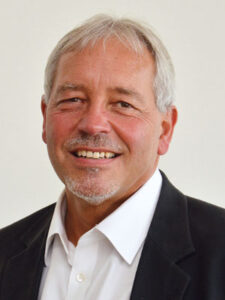Project C1 (PIs Bosch, Gruber-Vodicka) aims to explore the impact of microbes on senescence and life history switches in two stem bilaterians: Hydra and placozoans using a comparative approach. This includes focusing on the role of the microbiome in maintaining non-senescence in H. oligactis polyps during the switch from asexual to sexual reproduction, as well as investigating the role of intracellular bacteria in life history switches in placozoans and Hydra. The project is joined by the new PI Gruber-Vodicka, who complements the project aims with a focus on host-microbe interactions in placozoans.
Impact of symbiosis on life history decisions at the base of the metazoan evolution: lessons from placozoans and Hydra
Researchers
C1.1: What role does the microbiome play in maintaining non-senescence in Hydra
Christopher Noack
Dr. Alexander Klimovich
Prof. Dr. Dr. h.c. Thomas C.G. Bosch
C1.3: What is the role of intracellular Midichloriaceae in placozoans and Hydra, with a focus on environmentally induced life history switches?
Igor Duarte
Dr. Jinru He
Prof. Dr. Harald Gruber-Vodicka
Related Publications
Assembly of a functional neuronal circuit in embryos of an ancestral metazoan is influenced by temperature and the microbiome
Noack, C., Jenderny, S., Giez, C., Merza, O., Hofacker, L. M., Wittlieb, J., Repnik, U., Bramkamp, M., Ochs, K., Bosch, T. C. (2025). Proceedings of the National Academy of Sciences, 122(23), e2501225122. doi: https://doi.org/10.1073/pnas.2501225122
Satiety controls behavior in Hydra through an interplay of pre-enteric and central nervous system-like neuron populations
Giez, C., Noack, C., Sakib, E., Hofacker, L. M., Repnik, U., Bramkamp, M., & Bosch, T. C. (2024). Cell Reports, 43(6). doi: https://doi.org/10.1016/j.celrep.2024.114210
The potential importance of the built-environment microbiome and its impact on human health
Bosch, T. C., Wigley, M., Colomina, B., Bohannan, B., Meggers, F., Amato, K. R., Azad, M. B., Blaser, M. J., Brown, K., Dominguez-Bello, M. G., Ehrlich, S. D., Elinav, E., Finlay, B., Geddie, K., Geva-Zatorsky, N., Giles-Vernick, T., Gros, P., Guillemin, K., Haraoui, L. P., Johnson, E., Keck, F., Lorimer, J., McFall-Ngai, M. J., Nichter, M., Petterson, S., Poinar, H., Rees, T., Tropini, C., Undurraga, E. A., Zhao, L., & Melby, M. K. (2024). Proceedings of the National Academy of Sciences, 121(20), e2313971121. doi: https://doi.org/10.1073/pnas.2313971121
Wie arbeitet Wissenschaft heute? Vernetzte Zugänge für Universität und Schule
Parchmann, I., Bosch, T. B., Claussen, C., Duscher, T., Enzingmüller, C., Knüver, J., & Schulenburg, H. (2024). MNU-Journal/Verband zur Förderung des MINT-Unterrichts, 2024(1), 29-36.
The microbiome of the marine flatworm Macrostomum lignano provides fitness advantages and exhibits circadian rhythmicity
Ma Y, He J, Sieber M, von Frieling J, Bruchhaus I, Baines JF, Bickmeyer U, Roeder T (2023) The microbiome of the marine flatworm Macrostomum lignano provides fitness advantages and exhibits circadian rhythmicity. Communications Biology 6: 289. https://doi.org/10.1038/s42003-023-04671-y.
Spontaneous body wall contractions stabilize the fluid microenvironment that shapes host-microbe associations
Nawroth JC, Giez C, Klimovich A, Kanso EA, Bosch TCG (2023) Spontaneous body wall contractions stabilize the fluid microenvironment that shapes host-microbe associations. eLife doi: 10.7554/eLife.83637.
Microbes as part of ancestral neuronal circuits: Bacterial produced signals affect neurons controlling eating behavior in Hydra.
Giez C, Pinkle D, Giencke Y, Wittlieb J, Herbst E, Spratte T, Lachnit T, Klimovich A, Selhuber-Unkel C, Bosch TCG (2023) Microbes as part of ancestral neuronal circuits: Bacterial produced signals affect neurons controlling eating behavior in Hydra. bioRxiv doi: 10.1101/2023.04.28.538719
Symbiosis: the other cells in development
Tyler J. Carrier, Thomas C. G. Bosch (2022) Development. 49 (13): dev200797.
doi: 10.1242/dev.200797
Beyond Lynn Margulis’ green hydra
Bosch, T. C. (2022). Symbiosis, 87(1), 11-17.
Symbiotic Algae of Hydra viridissima Play a Key Role in Maintaining Homeostatic Bacterial Colonization.
Bathia J, Schröder K, Fraune S, Lachnit T, Rosenstiel P, Bosch TCG (2022) Front. Microbiol. 13:869666. doi: 10.3389/fmicb.2022.869666
Symbiont transmission in marine sponges: reproduction, development, and metamorphosis
Carrier TJ, Maldonado M, Schmittmann L, Pita L, Bosch TCG, Hentschel U (2022) BMC Biology 20(1):100 doi: 10.1186/s12915-022-01291-6
Wenn das Mikrobiom den Nerven trifft: Hydra hilft den Blick auf die Interaktion von Mikroben und Nervenzellen zu vertiefen
Bosch T & Giez C (2022). Wenn das Mikrobiom den Nerven trifft: Hydra hilft den Blick auf die Interaktion von Mikroben und Nervenzellen zu vertiefen. Biologie in Unserer Zeit, 52(4), 352–362. https://doi.org/10.11576/biuz-5866
Hydra´s lasting partnership with microbes: key for escaping senescence?
He J, Bosch TCG (2022) Microorganisms 10(4):774. doi: 10.3390/microorganisms10040774
Hydra and the hair follicle – An unconventional comparative biology approach to exploring the human holobiont.
Lousada MB, Lachnit T, Edelkamp J, Paus R, Bosch TCG (2022 ) Bioessays. 44(5):e2100233. doi: 10.1002/bies.202100233.
The role of DNA methylation in genome defense in Cnidaria and other invertebrates
Ying H, Hayward DC, Klimovich A, Bosch TCG, Baldassarre L, Neeman T, Forêt S, Huttley G, Reitzel AM, Fraune S, Ball EE, Miller DJ (2022) Molecular Biology and Evolution, msac018, doi: 10.1093/molbev/msac018
Antimicrobial Peptides—or How Our Ancestors Learned to Control the Microbiome
Bosch TCG, Zasloff M (2021) mBio. 12(5):e01847-21. doi: 10.1128/mBio.01847-21
Taking a microscale look at symbiotic interactions—and why it matters
Bosch TCG (2021) PNAS.
Beating in on a stable partnership.
Giez C, Bosch TCG (2021) Nat Rev Microbiol. doi: 10.1038/s41579-021-00575-y
Neurons interact with the microbiome: an evolutionary-informed perspective
Giez C, Klimovich A, Bosch TCG (2021) Neuroforum 27(2): 89–98. doi 10.1515/nf-2021-0003
Animal development in the microbial world: Re-thinking the conceptual framework.
Bosch TCG and McFall-Ngai M (2021) Current Topics in Developmental Biology. 141:399-427. ISSN 0070-2153. doi: 10.1016/bs.ctdb.2020.11.007
Animal development in the microbial world: The power of experimental model systems.
McFall-Ngai M and Bosch TCG (2021) Current Topics in Developmental Biology. 141: 371-397. ISSN 0070-2153. doi: 10.1016/bs.ctdb.2020.10.002
The hygiene hypothesis, the COVID pandemic, and consequences for the humanmicrobiome
Finlay BB, Amato KR, Azad M, Blaser MJ, Bosch TCG, Chu H, Dominguez-Bello MG, Ehrlich SD, Elinav E, Geva-Zatorsky N, Gros P, Guillemin K, Keck F, Korem T, McFall-Ngai MJ, Melby MK, Nichter M, Pettersson S, Poinar H, Rees T, Tropini C, Zhao L, Giles-Vernick T (2021) PNAS. doi: 10.1073/pnas.2010217118
Bacteria- and temperature-regulated peptides modulate beta-catenin signalling in Hydra
Taubenheim J, Willoweit-Ohl D, Knop M, Franzenburg S, He J, Bosch TCG, Fraune S (2020) PNAS. 117(35):21459-21468. doi: 10.1073/pnas.2010945117
Exploring the niche concept in a simple metaorganism
Deines P, Hammerschmidt K, TCG Bosch (2020) Frontiers in Microbiology, 11:1942, 1-11. doi: 10.3389/fmicb.2020.01942
Microbial species coexistence depends on the host environment
Deines P, Hammerschmidt K, Bosch TCG (2020) mBio 11:e00807-20. doi: 10.1128/mBio.00807-20.
Prototypical pacemaker neurons interact with the resident microbiota
Dynamic interactions within the host-associated microbiota cause tumor formation in the basal metazoan Hydra.
Rathje K, Mortzfeld B, Hoeppner MP, Taubenheim J, Bosch TCG, Klimovich A (2020) PLoS Pathog. 16(3):e1008375. doi: 10.1371/journal.ppat.1008375
Are noncommunicable diseases communicable?
Finlay BB, Blaser MJ, Bosch TCG, Dominguez-Bello MG, Elinav E, McFall-Ngai M, Melby MK, Muehlmann SR, Sansonetti PJ (2020) Science. 367(6475): 250-251. doi: 10.1126/science.aaz3834
Advancing our functional understanding of host–microbiota interactions: a need for new types of studies
He J, Lange J, Marinos G, Bathia J, Harris D, Soluch R, Vaibhvi V, Deines P, Hassani MA, Wagner K-S, Zapien‐Campos R, Jaspers C, Sommer F (2019) BioEssays, 1900211 (1-5). doi: 10.1002/bies.201900211
Comparative analysis of amplicon and metagenomic sequencing methods reveals key features in the evolution of animal metaorganisms
Rausch P, Rühlemann M, Hermes BM, Doms S, Dagan T, Dierking K, Domin H, Fraune S, von Frieling J, Hentschel U, Heinsen F-A, Höppner M, Jahn MT, Jaspers C, Kissoyan KAB, Langfeldt D, Rehman A, Reusch TBH, Roeder T, Schmitz RA, Schulenburg H, Soluch R, Sommer F, Stukenbrock E, Weiland-Bräuer N, Rosenstiel P, Franke A, Bosch T, Baines JF (2019) Microbiome, doi: 10.1186/s40168-019-0743-1
Temperature and insulin signaling regulate body size in Hydra by the Wnt and TGF-beta pathways
Mortzfeld BM*, Taubenheim J*, Klimovich AV, Fraune S, Rosenstiel P, Bosch TCG (2019) Nature Communications 10, 3257. doi: 10.1038/s41467-019-11136-6
Transgenesis in Hydra to characterize gene function and visualize cell behaviour.
Klimovich A, Wittlieb J, Bosch TCG (2019) Nat. Protoc., 1-24. doi: 10.1038/s41596-019-0173-3
The microbiome mediates environmental effects on ageing
Finlay B, Pettersson S, Melby M, Bosch TCG (2019) BioEssays, 1800257, 1-7; doi: 10.1002/bies.201800257
Evolutionary “experiments” in symbiosis: the study of model animals provides insights into the mechanisms underlying diversity of host-microbe interactions
Bosch TCG, Guillemin K, McFall-Ngai M (2019) BioEssays, 1800256 (1-8). doi: 10.1002/bies.201800256
Functions of the Microbiota for the Physiology of Animal Metaorganisms
Esser D, · Lange J, · Marinos G, · Sieber M, Best L, Prasse D, Bathia J, Rühlemann MC, Boersch K, Jaspers C, Sommer F (2018) J Innate Immun DOI: 10.1159/000495115
Hydra as Model to Determine the Role of FOXO in Longevity
Bosch TCG (2018); Methods Mol Biol. 1890:231-238. doi: 10.1007/978-1-4939-8900-3_19
Metabolic co-dependence drives the evolutionarily ancient Hydra-Chlorella symbiosis.
Hamada M, Schröder K, Bathia J, Kürn U, Fraune S, Khalturina M, Khalturin K, Shinzato C, Satoh N, Bosch TC (2018); Elife 7. pii: e35122. doi: 10.7554/eLife.35122
Grow With the Challenge – Microbial Effects on Epithelial Proliferation, Carcinogenesis, and Cancer Therapy
Von Frieling J, Fink C, Hamm J, Klischies K, Forster M, Thomas C. G. Bosch TCG, Roeder T, P Rosenstiel P, Sommer F (2018); Front. Microbiol. doi: 10.3389/fmicb.2018.02020
Non-senescent Hydra tolerates severe disturbances in the nuclear lamina.
Klimovich A, Rehm A, Wittlieb J, Herbst EM, Benavente R, Bosch TCG (2018); Aging (Albany NY) 10(5):951-972. doi: 10.18632/aging.101440
Rethinking the Role of the Nervous System: Lessons From the Hydra Holobiont.
Klimovich AV, Bosch TCG (2018); Bioessays 40(9):e1800060. doi: 10.1002/bies.201800060
Carrying capacity and colonization dynamics of Curvibacter in the Hydra host habitat
Wein T, Dagan T, Fraune S, Bosch TCG, Reusch TBH and Hülter NF (2018) Front. Microbiol., https://doi.org/10.3389/fmicb.2018.00443
Stem cell transcription factor FoxO controls microbiome resilience in Hydra.
Mortzfeld B M, Taubenheim J,Fraune S, Klimovich A V, Bosch T C G (2018); Front Microbiol., doi: 10.3389/fmicb.2018.00629
Metaorganisms in extreme environments: do microbes play a role in organismal adaptation?
Bang C, Dagan T, Deines P, Dubilier N, Duschl W J, Fraune S, Hentschel U, Hirt H, Hülter N, Lachnit T, Picazo D, Galan P L, Pogoreutz C, Rädecker N, Saad M M, Schmitz R A, Schulenburg H, Voolstra C R, Weiland-Bräuer N, Ziegler M, Bosch T C G (2018); Zoology, doi: 10.1016/j.zool.2018.02.004
How the microbiome challenges our concept of self.
Rees T, Bosch T G C, Douglas A E (2018); PloS Biol., 16(2):e2005358. doi:10.1371/journal.pbio.2005358
Temperate phages as self-replicating weapons in bacterial competition.
Li XY, Lachnit T, Fraune S, Bosch T C G, Traulsen A, Sieber M (2017); J R Soc Interface, 14(137). doi: 10.1098/rsif.2017.0563
Spontaneous body contractions are modulated by the microbiome of Hydra.
Murillo-Rincon A P, Klimovich A, Pemöller E, Taubenheim J, Mortzfeld B, Augustin R, Bosch T C G (2017); Scientific Reports, 7(15937). doi:10.1038/s41598-017-16191-x
A secreted antibacterial neuropeptide shapes the microbiome of Hydra.
Augustin R, Schröder K, Murillo Rincón A P, Fraune S, Anton-Erxleben F, Herbst E M, Wittlieb J, Schwentner M, Grötzinger J, Wassenaar T M, Bosch T C G (2017); Nat Commun., 8(1):698. doi: 10.1038/s41467-017-00625-1
The Origin of Mucosal Immunity: Lessons from the Holobiont Hydra.
Schröder K, Bosch T C (2016); MBio., 7(6):e01184-16. doi: 10.1128/mBio.01184-16
Transitioning from Microbiome Composition to Microbial Community Interactions: The Potential of the Metaorganism Hydra as an Experimental Model.
Deines P, Bosch T C G (2016); Front. Microbiol., 7:1610. doi: 10.3389/fmicb.2016.01610







